When it comes to hunting in the Lakes District region of the province, September is for the birds. High daytime temperatures that often soar past the 20-degree mark can make it less than ideal for big game hunting, but there are plenty of opportunities for targeting feathered fowl. Ruffed and spruce grouse are found in abundant numbers throughout the Lakes District, while dusky grouse keep to the higher elevations. Ptarmigan can be spotted in small numbers in some of the more southern reaches of the region, as well as above alpine in the west.
Advertisement
As the number of new hunters grows in the province, upland bird hunting is a great venture for novice hunters. For one, upland birds are plentiful in the region. As a new hunter, if you want to get out and put some meat in the freezer, you’ll have much better odds of doing so by putting a limit of grouse in the freezer, rather than trying to find one big game animal, like a moose. Secondly, grouse hunting can be relatively inexpensive. Of course, you need a gun and ammunition, but the small calibre required means that those initial costs can be kept quite low, and after that you can get out hunting. Finally, small game animals are a great way to get introduced to hunting without becoming overwhelmed. Not everyone is as lucky as I have been to have a hunting mentor (I would highly suggest finding someone, if you don’t already have one!), and the thought of having to tackle the gutting and processing of a large game animal on my own would stop me in my tracks from hunting said animal. Upland birds, however, are small enough that you can easily deal with your kill after the hunt on your own and work your way up to larger game later, if you so desire.
The Most Common Upland Game Birds In The Lakes District
Ruffed grouse are one of two grouse species most commonly found in the Lakes District. They have a slight crest on their heads, while their barred and spotted plumage features ranges of grey and brown. The tails of ruffed grouse have a distinctive black band across the tips of the feathers. The white meat is milder tasting than that of a spruce grouse.
Advertisement
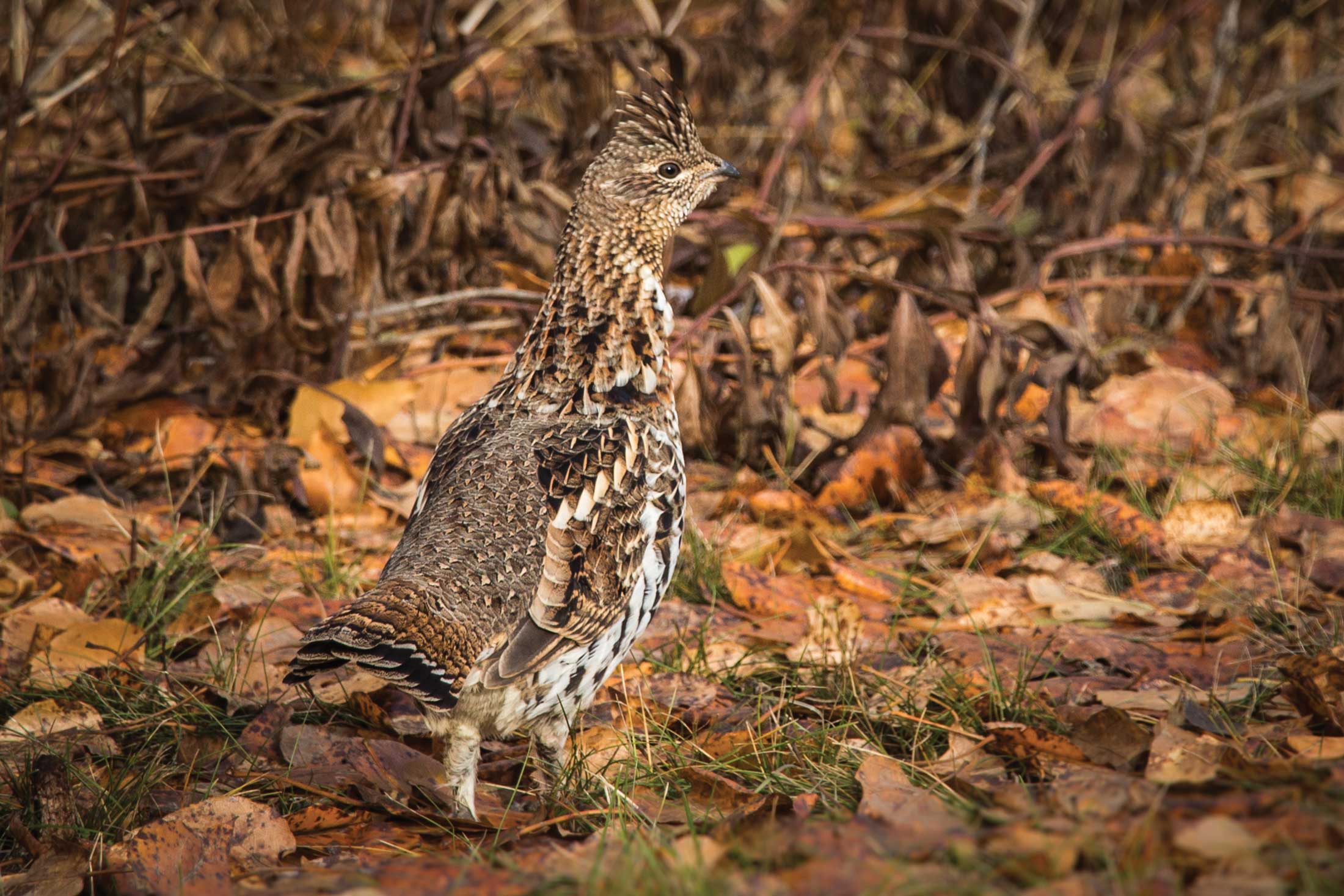
Spruce grouse are also found in the region. Male spruce grouse have a distinct bright red eyebrow and both sexes have darker plumage than that of a ruffed grouse. Spruce grouse tend to be less flighty than other upland birds, making them an easy target for hunters. Because they tend to feed on the needles of evergreen trees, their dark meat can take on a gamey flavour that can be minimized by soaking in saltwater or milk overnight before cooking.
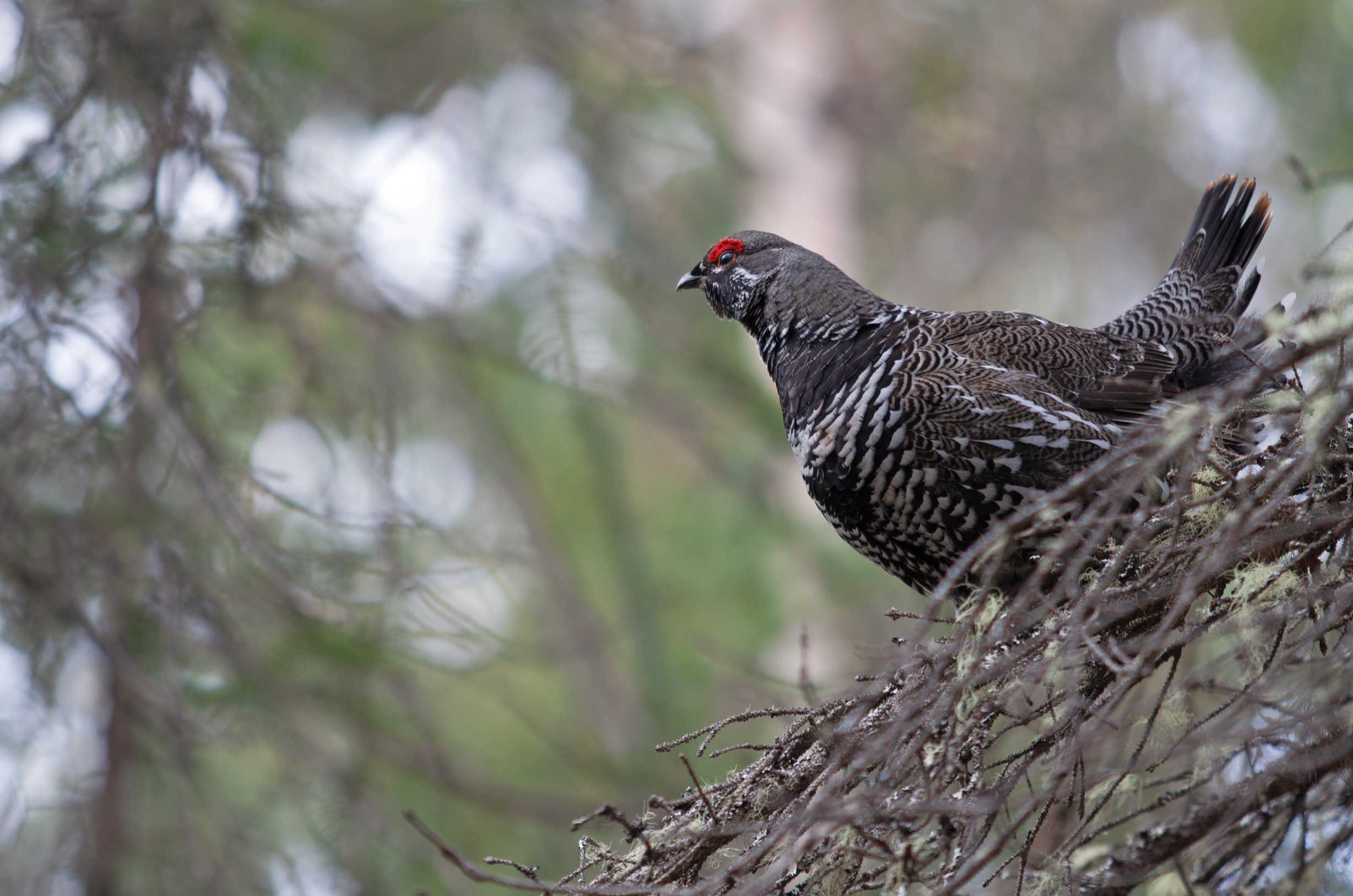
At higher elevations along the western reaches of the Lakes District, dusky grouse (previously known as blue grouse) can be found. These birds are significantly larger than the grouse found throughout the rest of the region. The males are dark grey, with an almost blueish tinge to their feathers, with red eyebrows and dark reddish-purple air sacs on their neck that they show off to the brownish-coloured females.
Advertisement
The most elusive of them all, ptarmigan can be found in small numbers in the southern portion of the Lakes District, as well as at higher mountain elevations to the west. In over two decades of living in this region, I can count the number of times I’ve seen ptarmigan on one hand. These flighty, cagey birds don’t stick around for long once their cover is blown, so you will need to be quick on the trigger to bag one. They are mottled greyish brown in colour, while non-breeding ptarmigan have brilliant white plumage that helps to camouflage them in the snow.
Where To Hunt
The Lakes District region of north-central British Columbia is centered around Burns Lake. About a two-hour drive west of Prince George along Highway 16, this vast region boasts thousands of kilometers of lakeshore, and lots of open space to get out hunting.
The mixed deciduous-coniferous forests of the Lakes District make for prime ruffed grouse habitat. They spend their days foraging for bugs, berries and seeds, usually keeping to the dense cover of shrubs or willows along creek beds. A good opportunity to spot ruffed grouse is after a rainstorm – the grouse will often come out into little clearings to sun themselves and dry out after the rain.
Large-scale logging throughout the region has created the perfect habitat for spruce grouse. As their diet consists mainly of evergreen needles, the stands of 10 to 15-year-old pine in old cut blocks are full of these birds. The open forest floors of these young stands also make it easier to spot these well-camouflaged birds.
In the mountains southwest of Burns Lake, you will find ptarmigan and dusky grouse. While ptarmigan are typically found above alpine, except for small pockets around the Nechako Reservoir, dusky grouse make their homes in mature forests along the base of mountains. They are easy to spot in the relatively open understory of these forests.
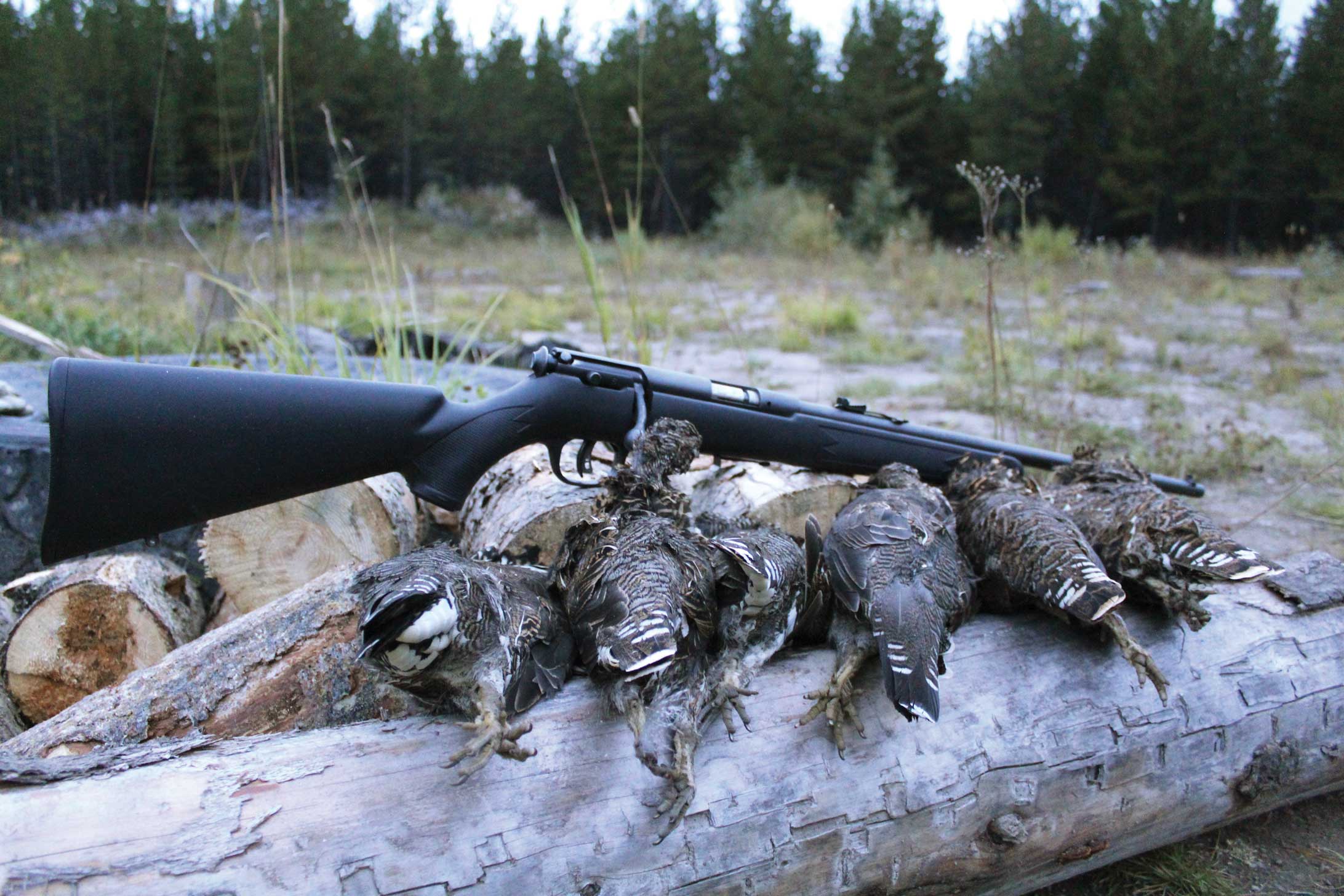
Guns & Ammunition
One of the perks to hunting upland game birds is you do not need to spend a fortune on fancy, high-powered rifles to get the job done. To narrow down your firearm of choice, you first need to ask yourself what shooting situations you find yourself in most commonly. When hunting with a bird dog, you may find yourself shooting on the wing much more often, as your dog flushes birds up in front of you; in those situations, a shotgun would be the most favourable gun for the task. If you are hunting alone, however, you will often find yourself able to make accurate headshots using a rifle.
If you are undecided on whether to go shotgun or rifle, a great option is to go with a combination gun. These guns have one rifled barrel and one smoothbore barrel and provide flexibility on your hunt, while only requiring one gun be packed around. The first grouse I ever shot was taken with a single-shot, open sighted, combination .22LR rifle/.410 shotgun. During that particular hunt, we hiked through varied terrain, and as a novice hunter that flexibility gave me a lot of confidence on that first hunt.
When we first were training our bird dog, a very enthusiastic Brittany, hunting with a shotgun made the most sense, as many of the birds we encountered were already on the move. For those hunts, we leaned back on our reliable 20-gauge shotgun with a light load. The gun is light enough for both those long hunts where you cover a lot of ground behind the dog, and those moments where a quick reaction is required when birds come flying out of a dense thicket. There is minimal recoil, which is particularly nice for a smaller hunter like me.
Nowadays, my go-to firearm of choice for upland birds is a Savage .22LR rifle. These extremely affordable rifles are reliable and can be used with open sights or fitted with a scope. We don’t find ourselves in any sort of long-distance shooting situations when using this gun, so I’ve kept mine with open sights. There are plenty of ammunition options for these guns, and I’ve used American Eagle, Winchester and Remington bullets in the past, all around the 38 to 40-grain range and 1,255 feet per second at the muzzle. Because we do so much bird hunting (in addition to taking the .22 out for some target practice), my go-to has been the Remington Golden Bullet; the Internet is full of mixed reviews of this ammunition, but it’s one I have been using for the last six or so years and I don’t really have any complaints about it.
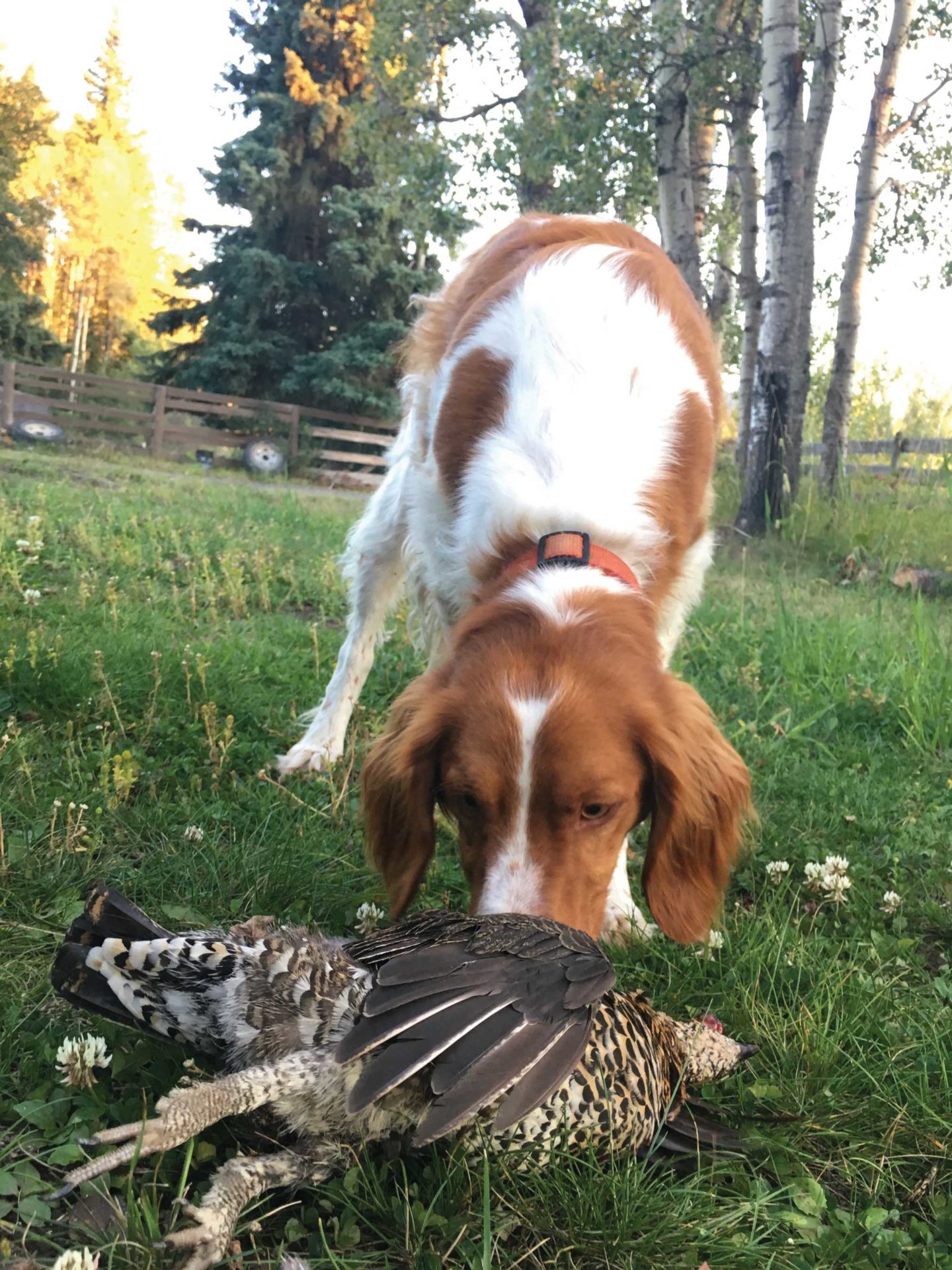
Hunting With A Brittany
One thing is for certain: upland bird hunting with a dog is infinitely more exciting than without. I’m a bit biased towards Brittanys, having grown up with one and then raising and training another in my early 20s, but the hunt takes on a whole other level when you get to watch that uncanny bird sense switch on and get to work. They are incredible dogs, intelligent and filled with an eagerness to please and unending energy. Brittanys are on the smaller size for bird dogs, averaging in the mid-30-pound range, but mighty; they will point and flush birds all day long if given the opportunity. Their loving personalities make them irreplaceable as a family companion, as long as their exercise requirements are met.
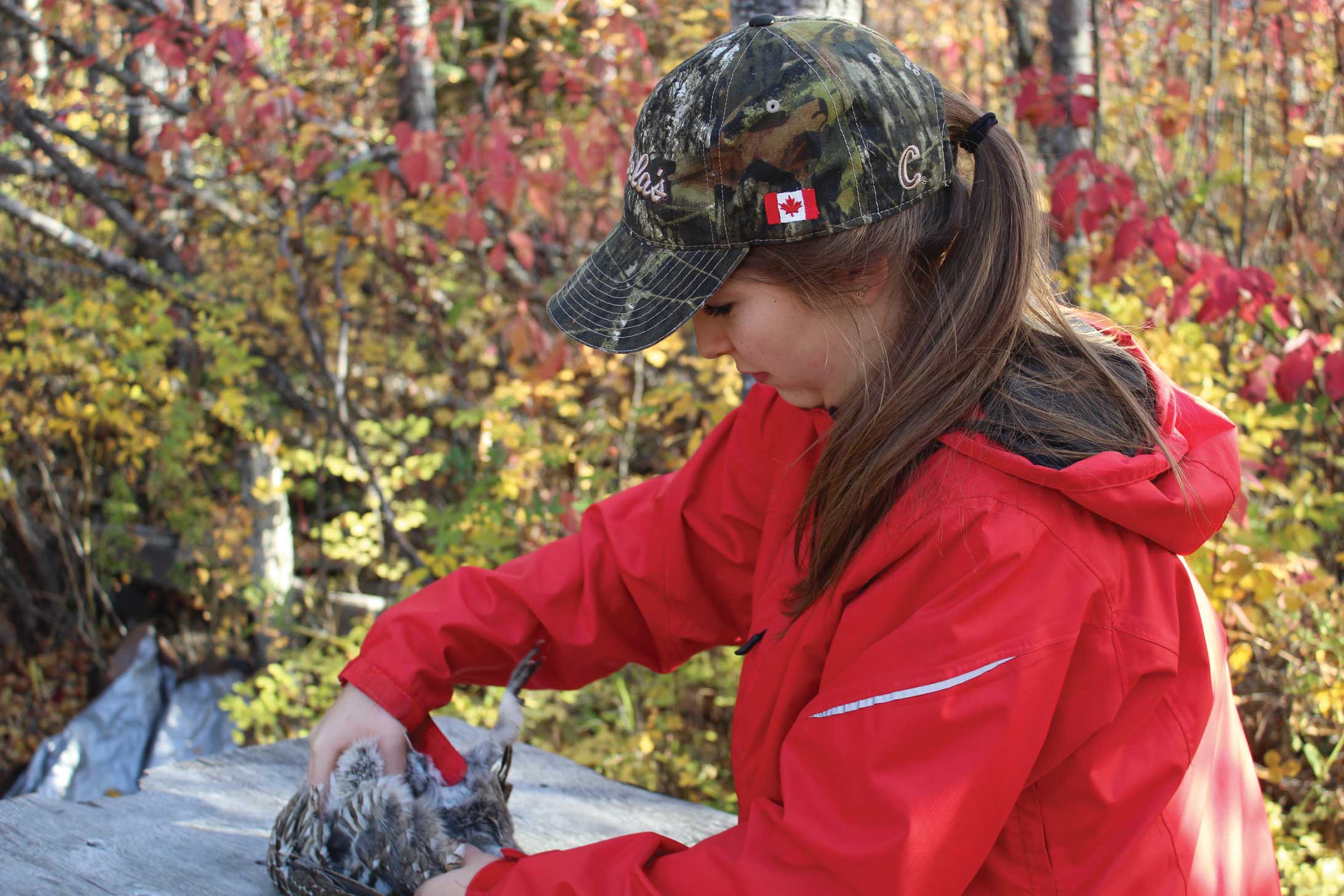
Clean A Grouse In Under A Minute
Growing up, we would get home from a hunt and sit down to the task of cleaning our birds. This involved a lot of plucking, and although it’s not a bad way to clean a grouse, there is an easier technique. With a leg in each hand, set the grouse on the ground so that you can step on each wing with your feet, as close to the bird’s body as possible. Then, in one swift motion, pull upwards. This will remove all the guts and feathers, leaving you with the whole body cleaned and just needing wings removed. You will still need to peel the feathers off the legs, but the entire process can be done in under 60 seconds.